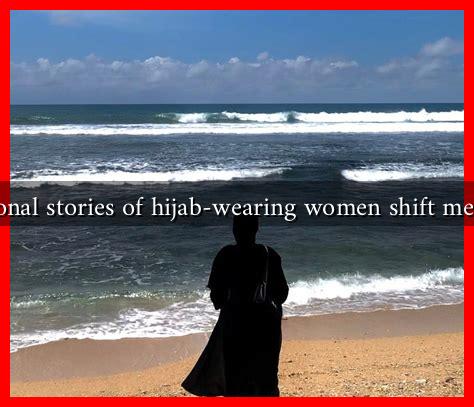-
Table of Contents
- How Do Personal Stories of Hijab-Wearing Women Shift Media Narratives?
- The Power of Personal Narratives
- Case Studies: Shifting the Narrative
- 1. The #HijabForHijabis Movement
- 2. The Work of Documentarians
- Statistics and Research Findings
- The Role of Social Media
- Conclusion: A Call for Continued Storytelling
How Do Personal Stories of Hijab-Wearing Women Shift Media Narratives?
The hijab, a traditional headscarf worn by many Muslim women, has often been a focal point of media narratives that tend to portray it in a negative light. However, personal stories from hijab-wearing women are beginning to shift these narratives, offering a more nuanced and humanized perspective. This article explores how these personal accounts challenge stereotypes, promote understanding, and ultimately reshape the media landscape surrounding hijab-wearing women.
The Power of Personal Narratives
Personal stories have a unique ability to connect with audiences on an emotional level. When hijab-wearing women share their experiences, they provide insights that statistics and generalizations often overlook. These narratives can serve to:
- Humanize the Experience: Personal stories allow individuals to see hijab-wearing women as complex human beings rather than mere symbols of oppression.
- Challenge Stereotypes: By sharing their diverse experiences, these women can debunk myths and stereotypes that often dominate media portrayals.
- Foster Empathy: Hearing personal accounts can evoke empathy and understanding, encouraging audiences to reconsider their preconceived notions.
Case Studies: Shifting the Narrative
Several case studies illustrate how personal stories have successfully shifted media narratives surrounding hijab-wearing women:
1. The #HijabForHijabis Movement
In 2017, the #HijabForHijabis movement emerged on social media, where non-Muslim women wore hijabs in solidarity with their Muslim counterparts. This initiative was not just a fashion statement; it was a way to amplify the voices of hijab-wearing women. Participants shared their experiences and the significance of the hijab in their lives, which helped to:
- Highlight the diversity of reasons for wearing the hijab, from religious obligation to personal choice.
- Encourage dialogue about cultural appropriation and respect for different traditions.
2. The Work of Documentarians
Documentaries like “The Secret Life of Muslims” have also played a crucial role in shifting narratives. By focusing on the everyday lives of Muslim individuals, including hijab-wearing women, these films provide a platform for personal stories that challenge mainstream media portrayals. For instance:
- They showcase the achievements and aspirations of hijab-wearing women, emphasizing their roles as professionals, activists, and community leaders.
- They address the challenges faced by these women, such as discrimination and misunderstanding, while also celebrating their resilience.
Statistics and Research Findings
Research supports the idea that personal stories can significantly impact public perception. A study conducted by the Pew Research Center found that:
- Over 60% of Americans reported having a more favorable view of Muslims after engaging with personal stories from Muslim individuals.
- Media representations that include personal narratives are more likely to foster understanding and reduce prejudice.
These findings underscore the importance of amplifying the voices of hijab-wearing women in media narratives.
The Role of Social Media
Social media platforms have become vital spaces for hijab-wearing women to share their stories. Platforms like Instagram and Twitter allow for:
- Direct Engagement: Women can connect with audiences directly, bypassing traditional media gatekeepers.
- Community Building: Online communities provide support and solidarity among hijab-wearing women, fostering a sense of belonging.
- Viral Impact: Personal stories can go viral, reaching a broader audience and challenging mainstream narratives.
Conclusion: A Call for Continued Storytelling
Personal stories of hijab-wearing women are powerful tools for shifting media narratives. By humanizing their experiences, challenging stereotypes, and fostering empathy, these narratives contribute to a more nuanced understanding of the hijab and the women who choose to wear it. As media continues to evolve, it is crucial to prioritize and amplify these voices, ensuring that the narratives surrounding hijab-wearing women are diverse, respectful, and representative of their realities.
In a world where media narratives can shape perceptions and influence societal attitudes, the stories of hijab-wearing women are not just important—they are essential. For more insights on this topic, you can explore resources from organizations like Muslim Women’s Network.


